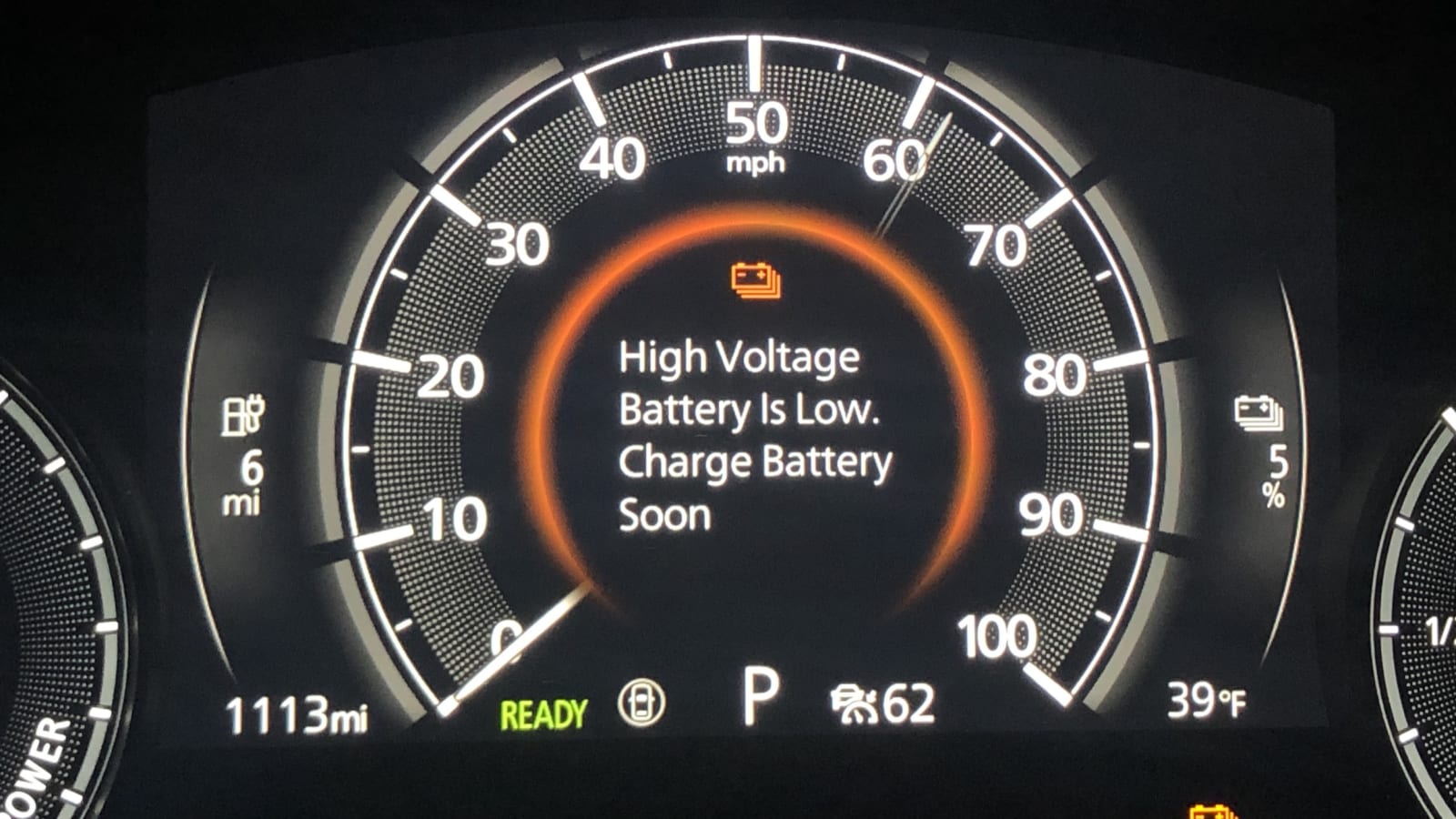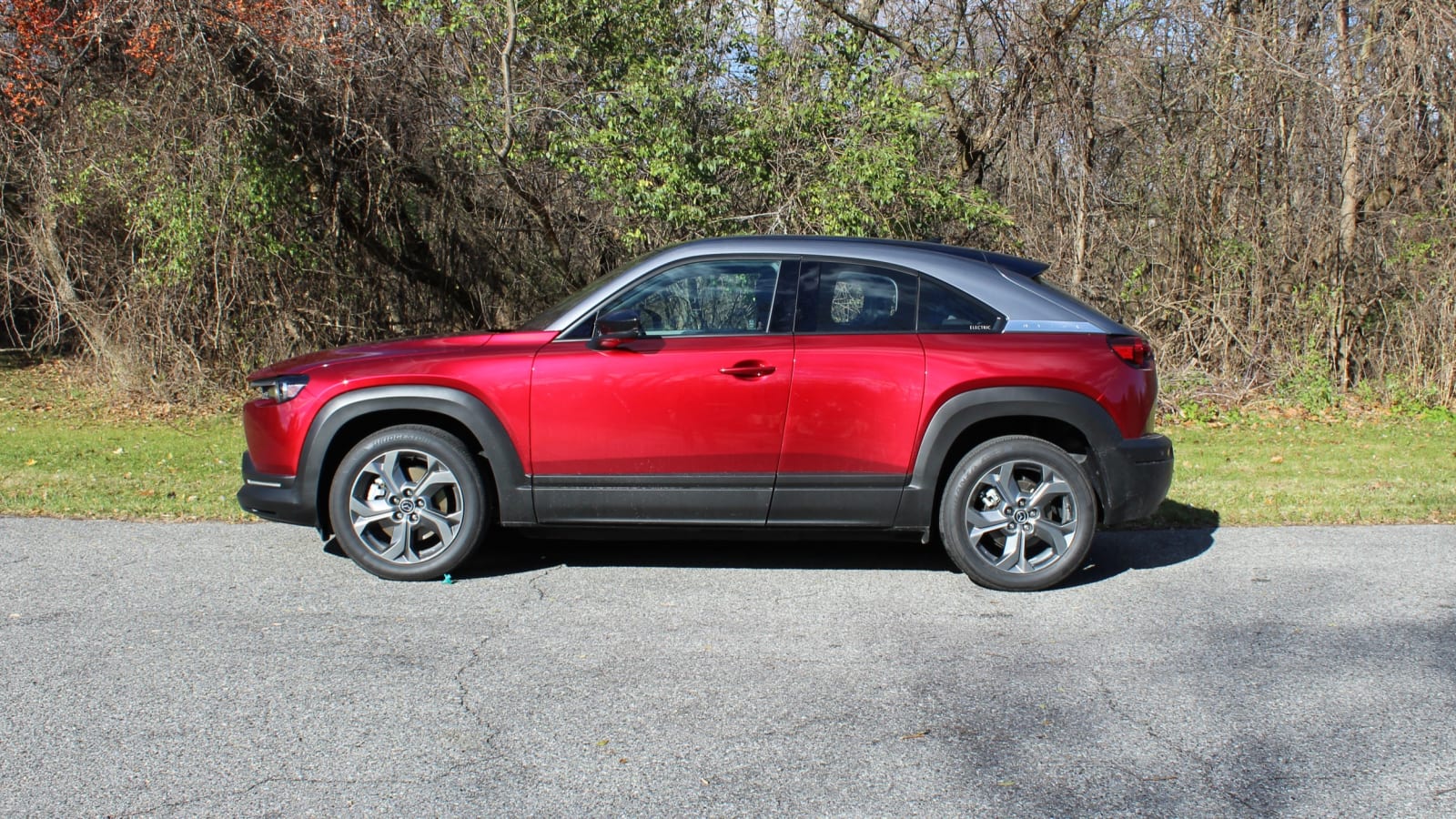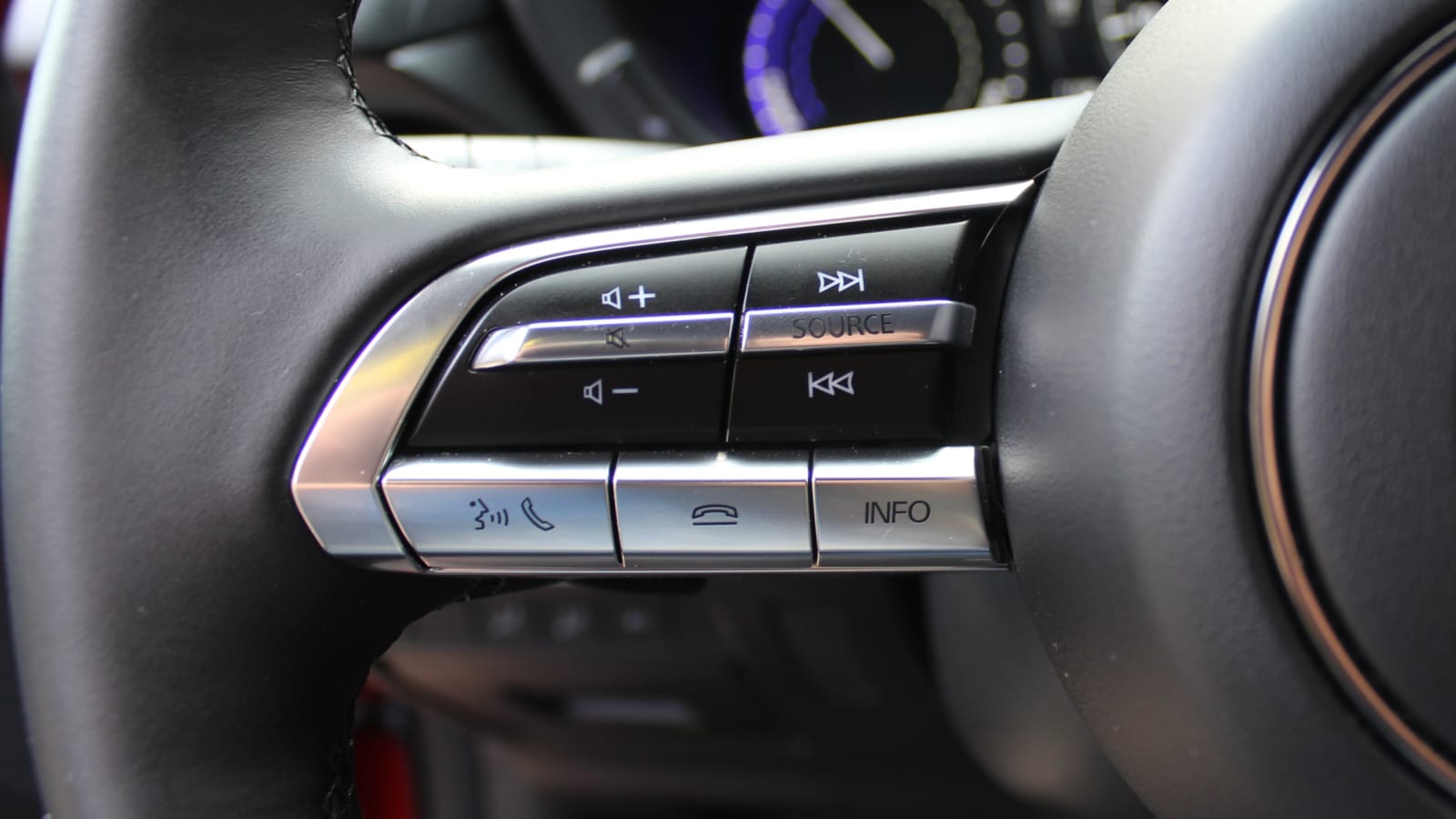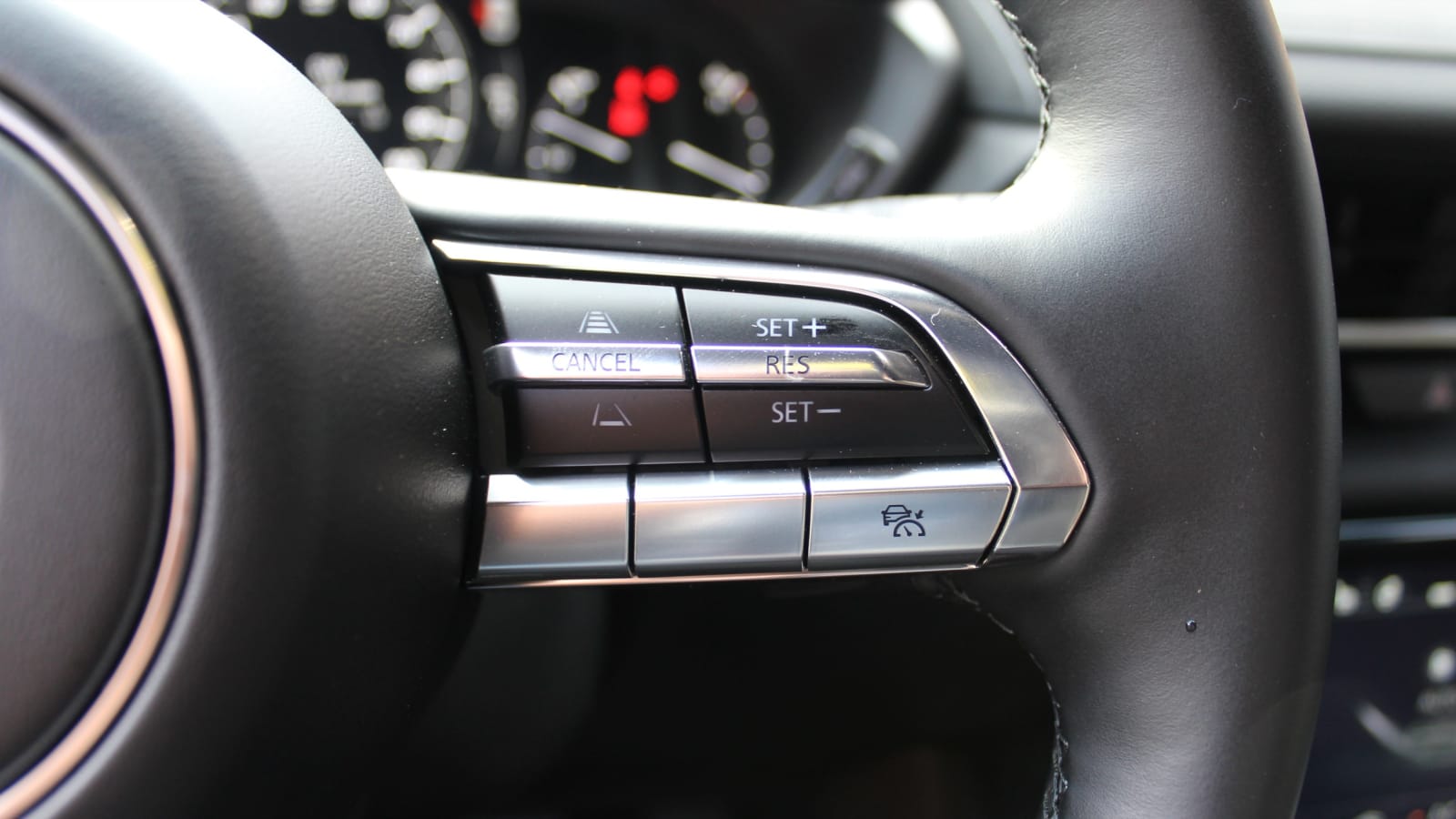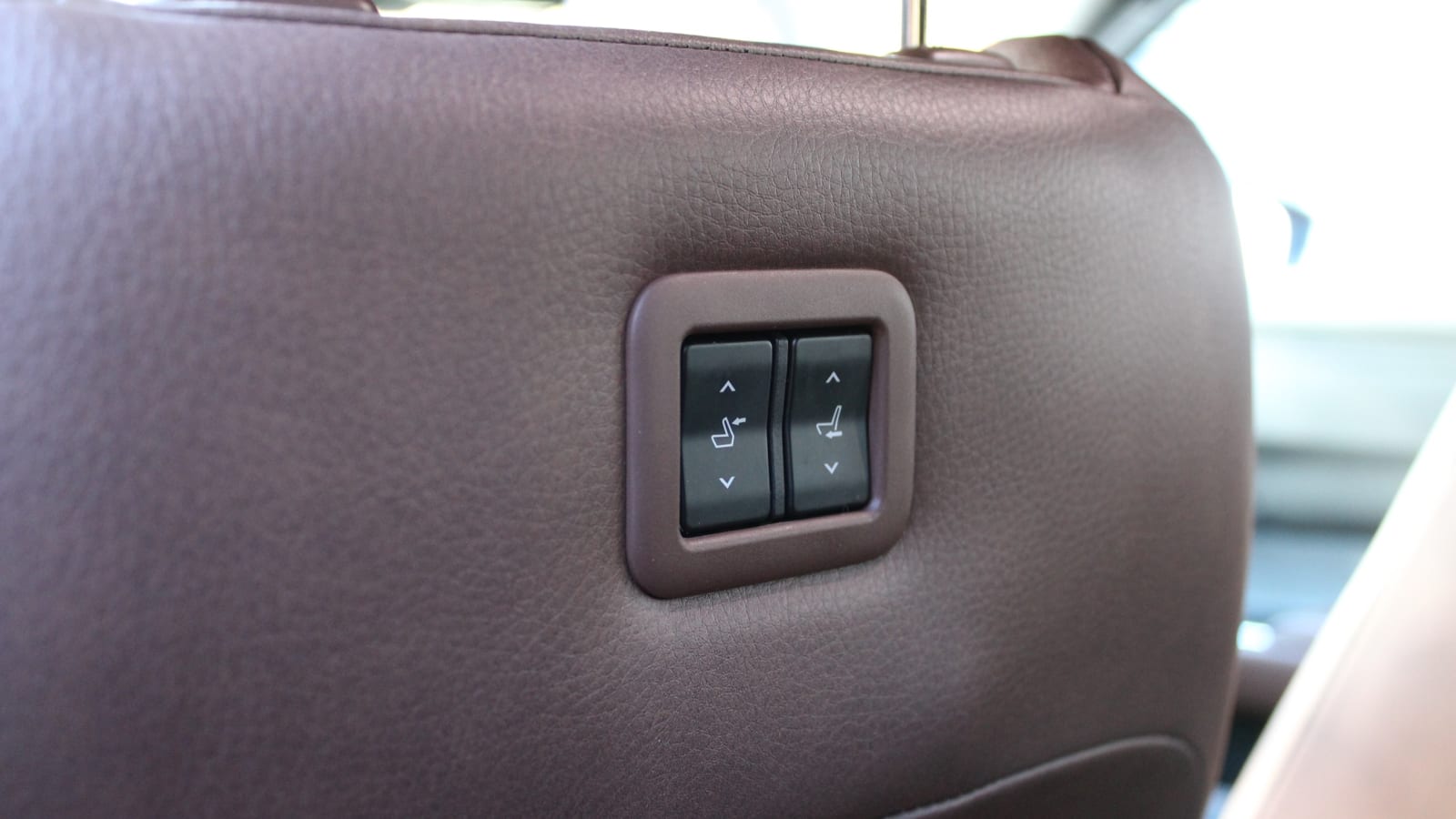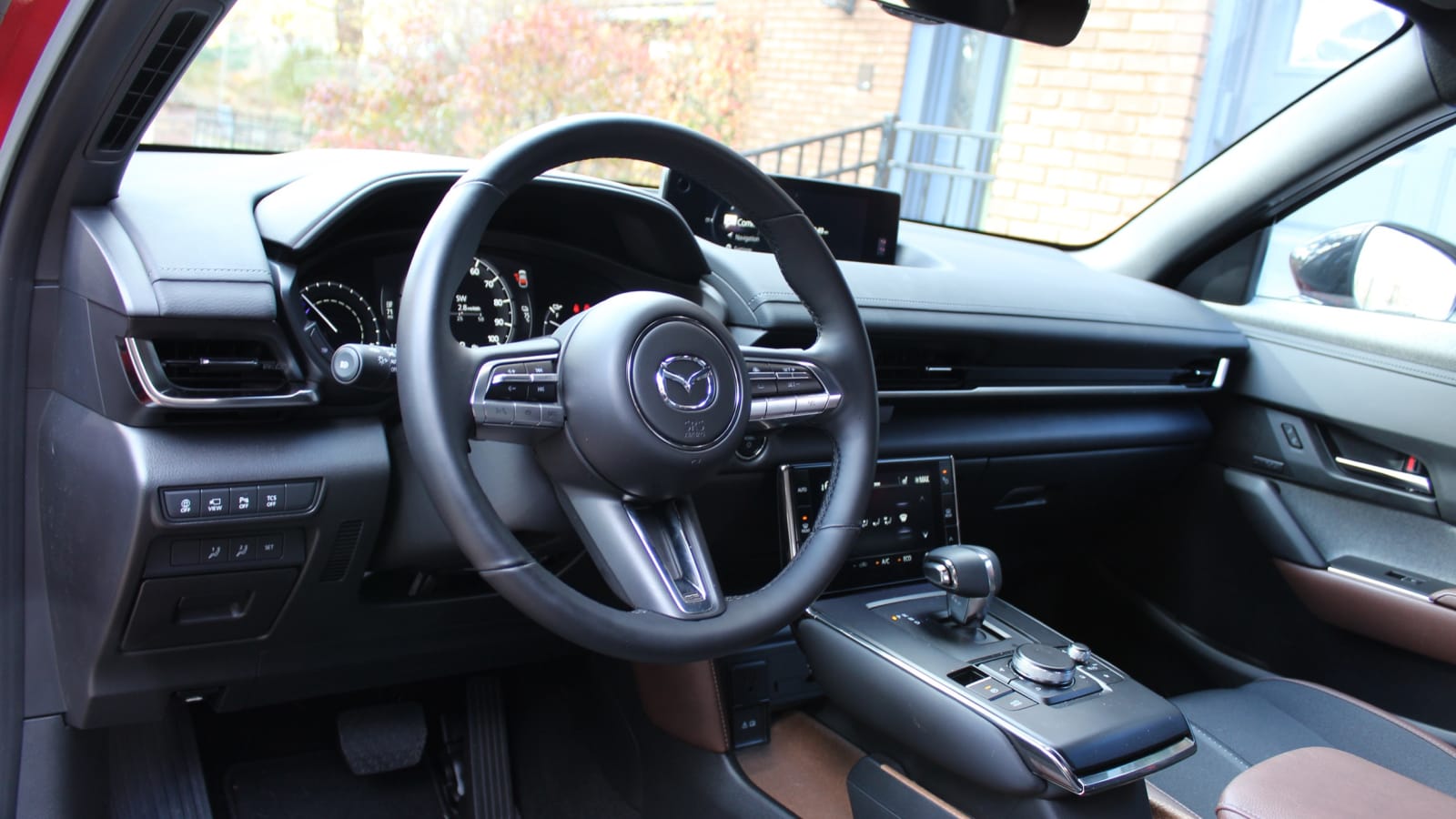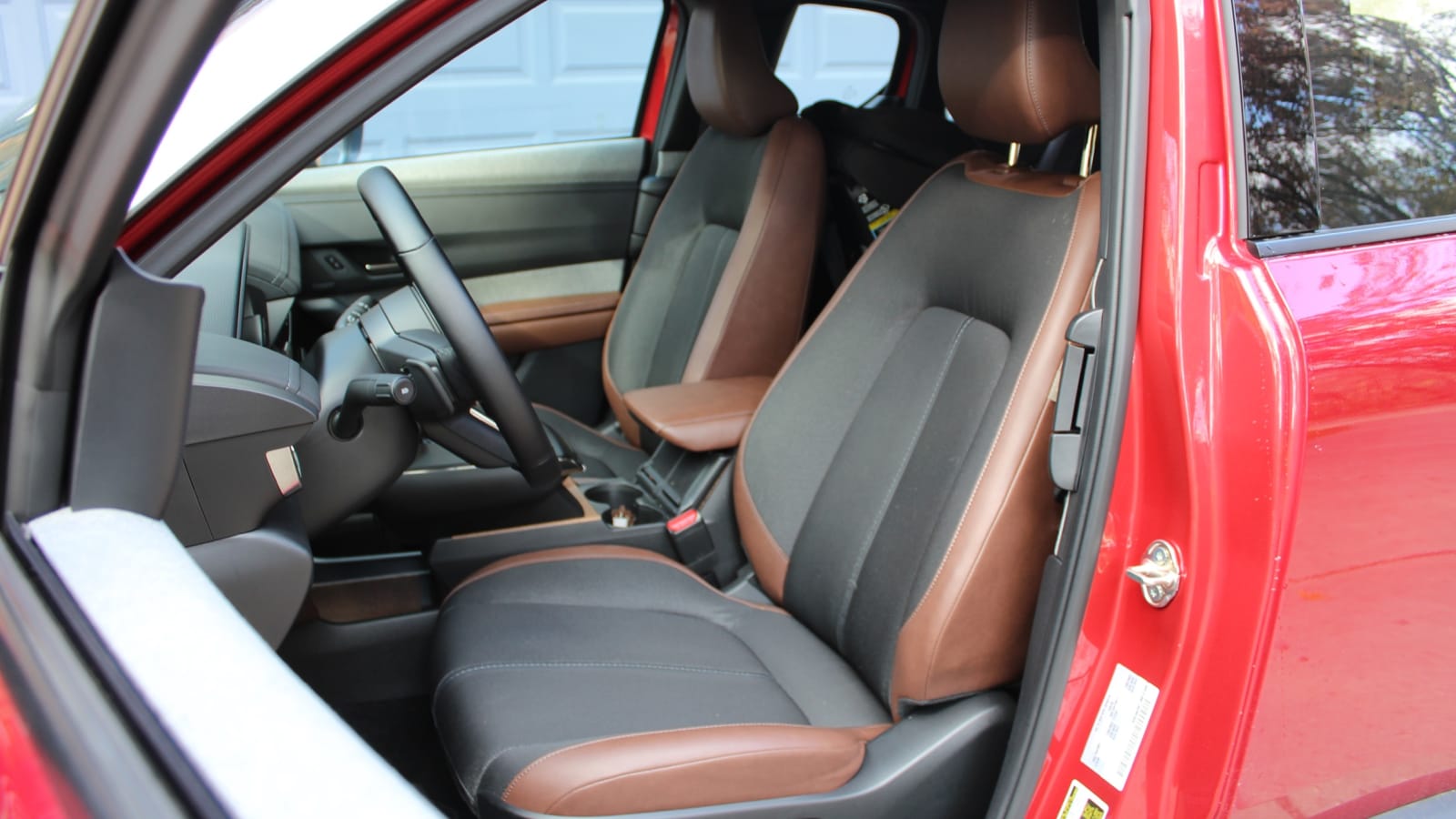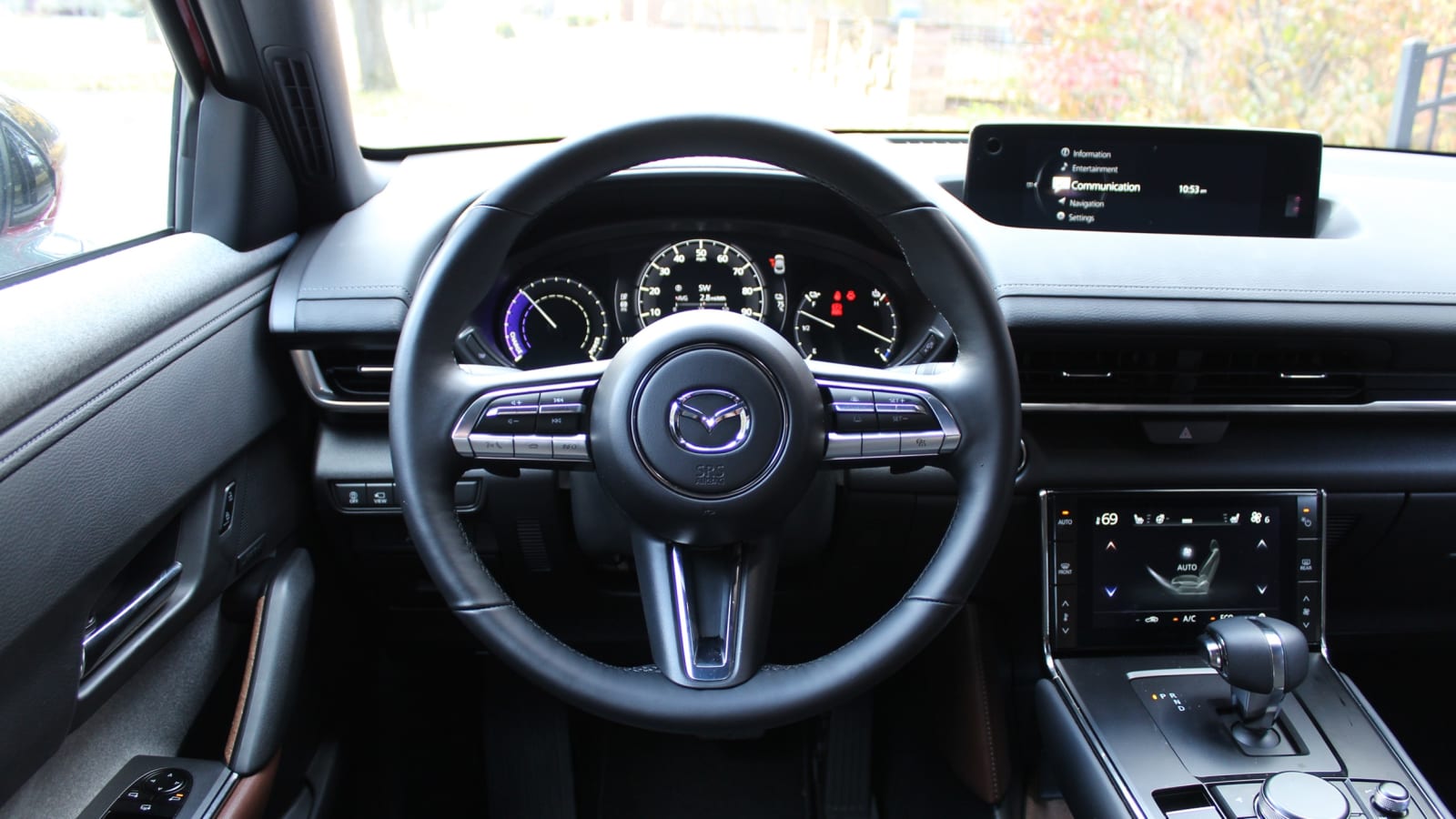I just spent a week in the Mazda MX-30 EV. I hated it at first, but then I found some nice things to say about it. Overall, it was a stressful EV to live with as an only car for a week. (My wife’s Palisade was in the shop, and my ’74 Beetle currently doesn’t have a steering wheel.) That said, the MX-30 did have me, once again, yearning for an electric daily driver. Just not this electric daily driver.
Things I didn’t like about the MX-30
100 miles of range
If you’re nostalgic for first-generation EV range anxiety, or just like waiting around at public chargers, the MX-30 should be right up your alley. Heading home on the highway 25 miles out, when the car is telling you there’s just 28 miles of range left, doesn’t leave a lot of room for error or unexpected detours.
It’s not awesome when you start getting alerts on the instrument panel about having a low battery when it gets to about 33% charged. In some cars, 33% would mean you’ve still got 100 miles to go. In many others, it’s at least 75 miles.
At least my sister thought it was funny that I could never go very far without charging. Sometimes a loved one’s tiny sufferings can be humorous.
The busy exterior
The window sticker mentions “three-tone,” but there’s a lot more than that going on here. The glossy black roof, silver pillars and upper door frame, red body panels, black plastic cladding, and another kind of grey metallic plate on the rear pillars all clash with one another. It’s a lot to take in, and it’s a clue to all the other weirdness you’ll find with this car.
The doors
Look, having rear doors is better than not having them. They’re also pretty cool looking. However, opening the rear doors requires opening the front ones first. That’s annoying, part 1. Part 2 is that rear doors that open rearward make it harder to get a kid into their rear-facing car seat. I had to feed my daughter in feet first at a sort of semi-horizontal angle. I noted at the time that it was something akin to childbirth in reverse. “Yeah, it’s exactly like that,” was my wife’s sarcasm-soaked response, but she knew what I meant. You knew what I meant, Cat.
The steering wheel controls
I love having audio and cruise control buttons at my fingertips. These switches toggle up and down, or push directly in depending on what you’re trying to do. It was far too easy, however, to press inward when trying to toggle those switches up or down, or vice versa. I often muted the audio when I meant to adjust the volume, or set a new cruising speed when I meant only to resume.
The seat adjusters on the back of the driver’s seat
These make sense if an adult passenger needs to create more space to get in and out of the rear seat (the front passenger seat has a lever to move the whole seat in one motion like you would in a coupe). When your son thinks those buttons are just something to play with, it’s less than ideal. They were too great of a temptation when I was busy getting his sister in her seat, locking up the house or packing up cargo. I’d return to my side of the car with the front seat in complete disarray.
Merging onto the highway
Having 143 horsepower and 200 pound-feet felt like enough in most situations, especially motoring around town given the ample low-end torque. That oomph peters out as you approach highway speeds, and I found it difficult to match the speed of traffic when merging onto the interstate. It’s better once you know what sort of accelerative behavior to expect — you can account and adjust — but that first time merging with 70-mph traffic was short of fun.
Lack of lane-centering
The MX-30 tends to drift around in its lane on the highway, requiring constant light touches to the steering. It’s not surprising considering its relatively short wheelbase, but lane-centering automated steering would help make for lower-effort highway driving.
Feeling cramped
I couldn’t put my daughter’s rear-facing child seat behind me. My son had very little legroom behind me in his high-back booster seat. There’s not a lot of storage. The little cubby below the center stack is hard to reach. Headroom is plentiful, but my wife and I both felt like the doors and center console were closing in around us. It was hard for the front occupants to pass a snack or pacifier to the rear seat without bending one’s arm in an unnatural manner.
Things I liked about the MX-30
The price is nice
The MX-30 EV that arrived in my driveway with the Premium Plus package and $995 Soul Red three-tone paint scheme stickered at $38,605, including the $1,175 destination fee. Factor in the available $7,500 EV tax credit, any other local incentives, and a $500 credit from ChargePoint for either public charging or toward the purchase of an at-home charger, and this is an affordable EV with a somewhat premium feel.
The interior design is nice
That aforementioned premium feel largely comes from the MX-30’s interior, in particular some fine materials throughout. There’s an almost woolen fabric, as well as some really nice-looking brown leather. Things you touch, look and feel are interesting and sturdy. Mazda does a fine job here, as it does in its other vehicles.
Cargo area
The economy of space in the cabin meant that instead of putting things on the floor or in a storage bin like we normally would, we were packing it into the cargo area along with the larger items we already put back there. I was surprised with how easily it accommodated a folded-up jogging stroller. Then we had to stack grocery bags on and around the stroller. Despite the angle of the rear window, it all fit without getting smashed when we closed the hatch.
A useful HUD
The MX-30’s head-up display is top-notch. It’s not multi-color, which is fine. The displayed data is organized and clearly legible, negating the need for color coordination. My favorite feature, though, is the blind-spot information displayed right in front of you. It was easy to tell when someone was approaching from either rear corner, which was great, because visibility during an over-the-shoulder check provides very little visual information. Other Mazdas have this feature as well.
Forward cross-traffic alert
The MX-30 gets this aid exactly right. I’m used to rear cross-traffic alert, but the MX-30 is the rare vehicle that gives you a warning when nosing out forward. There’s a little chime that lets you know that a car is coming across your bow, which is helpful, and the audio cue isn’t shrill. I like to know that the MX-30 is helping to cover me if I happened to miss that car coming around that blind curve.
The driving dynamics
While it tends to drift around on the highway, its short-ish wheelbase and low center of gravity makes it fun to romp around town in. The suspension is well-tuned, and the steering feel is excellent. News Editor Joel Stocksdale covers the MX-30’s fine driving behavior in his thoughtful first drive review. Go read it.
It’ll be fun to see and think about in 30 years
How excited do you get when you see weird, rare cars on the road, like a Subaru SVX or Isuzu VehiCross? This will be a fun car for whatever the 2050 version of Radwood will be. A weird-looking, inconvenient, mold-breaking vehicle will be fun to reminisce about, especially if equipped with a rotary range-extender.
It leaving my driveway
After multiple trips to “fast” chargers during the week, and still rolling into the driveway with single-digit mileage left in the pack, it was a huge relief to see the MX-30 replaced with something with actual range. In this case, it was a gas-powered Volvo S90, but it could have been a Nissan Leaf and I would have been happy. Just give me four normal doors and the ability to visit my grandma without adding an extra 45 minutes at a charger. Please.
Related video:
Source: www.autoblog.com

